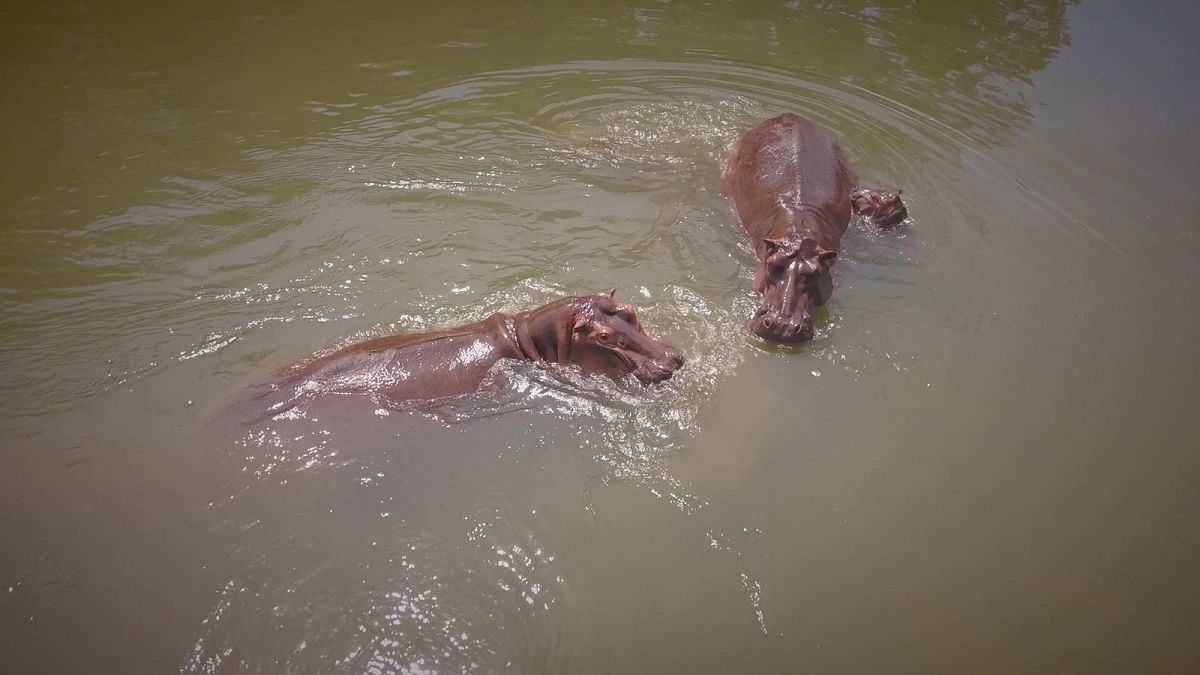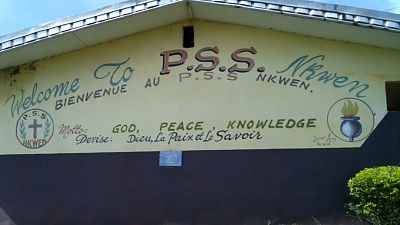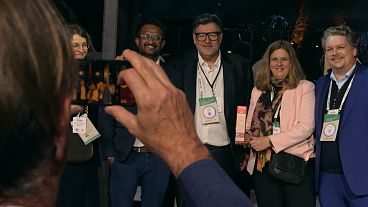In this edition of Focus, we are off to Cameroon, to discover the incredible diversity of this country, described by many as “Africa in Miniature”.
In this edition of Focus, we are off to Cameroon, to discover the incredible diversity of this country, described by many as “Africa in Miniature”.
Our journey starts in Ngaoundere, where a traditional Fantasia festival is in full swing. We head to Benoue National Park – one of the three big parks in Northern Cameroon, and a major animal sanctuary. Covering 180,000 hectares, it is twice the size of Paris.
We set up base at Black Buffalo camp, one of three in the park. We are greeted by the park warden, Jean-Paul Kevin Mbamba Mbamba.
To attract more tourists, Benoue has established partnerships with other parks, like Bristol Zoo for example. This has enabled the team here to fit animals with tracers, which allows them to know exactly where some species live.
“We can take you directly to the place where you’ll have the best chance of seeing the animals. Of course, there’s no guarantee, there’re not tied up and they are free to move about, but there is a high chance of spotting them in these specific places which we have identified,” Jean-Paul Kevin tells us.
We follow one of the park’s eco-guards in the search for wild animals. And we are lucky enough to get a peek at a derby, the largest antelope in Africa, but also one of the shyest. It can only be found here, in Cameroon.
Next, we discover the traces of hippopotamuses, and we find the giants bathing peacefully next to a bask of crocodiles.
The Park of Benoue is considered one of the main wildlife corridors in this region of Africa. It is surrounded by hunting areas managed by the local population. The idea is to develop ‘inclusive tourism’.
“We want to help locals improve their own living conditions by working on the exploitation and the development of the tourist sites where they live,” says Daniel Nganhoul, Director of Tourism Promotion in Cameroon. “They mustn’t be excluded.”
Change of scene. We travel to the Southwest of the country, to the green slopes of Mount Cameroon, an active volcano, whose last eruption dates back to the year 2000.
We set off up the 4.100 meter-giant with our guide Daniel Efande.
This is where the annual Race of Hope takes place – a 42-km round trip. The best runners cover the distance in just over 4 hours. But for us, it will take at least two days.
“You must be physically fit,” Daniel tells us. “Because the higher you go, the colder it becomes, the higher you go, the less oxygen there is, so you need a lot of strength. If you climb this, you are on the top of West and Central Africa. So, you are on the highest point, you are the king!”
The trek is breathtaking. Mount Cameroon is a natural park covering 58,000 hectares, home to thousands of endemic species, like the monkey cane, a plant that can be particularly useful for hikers.
“If you have run out of water, you just need to look for this plant: there is water inside. You peel it and chew it. The plant is endemic to this area, you only find it 1.200 meters above sea level. It’s also good for smokers, it helps clean your system, it cleans your lungs,” Daniel explains.
Finally, Daniel and our reporter, Serge Rombi reach the refuge. “We are 1.800 meters above sea level, at one of the four refuges along the way to the summit of Mount Cameroon,” says Serge. “You can spend the night here, in the heart of nature. But of course – and this is part of the experience – you will have to bring your own water, food and sleeping bag.”
Before leaving Cameroon, we just have time to check out the ocean. On the south side of the volcano lies Limbe, one of the country’s most popular seaside resorts. With its black sandy beaches, attractive hotels and easy lifestyle, it offers yet another taste of what this beautiful country has to offer.



